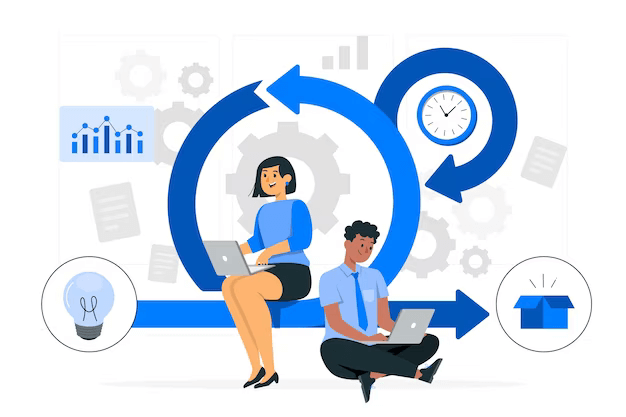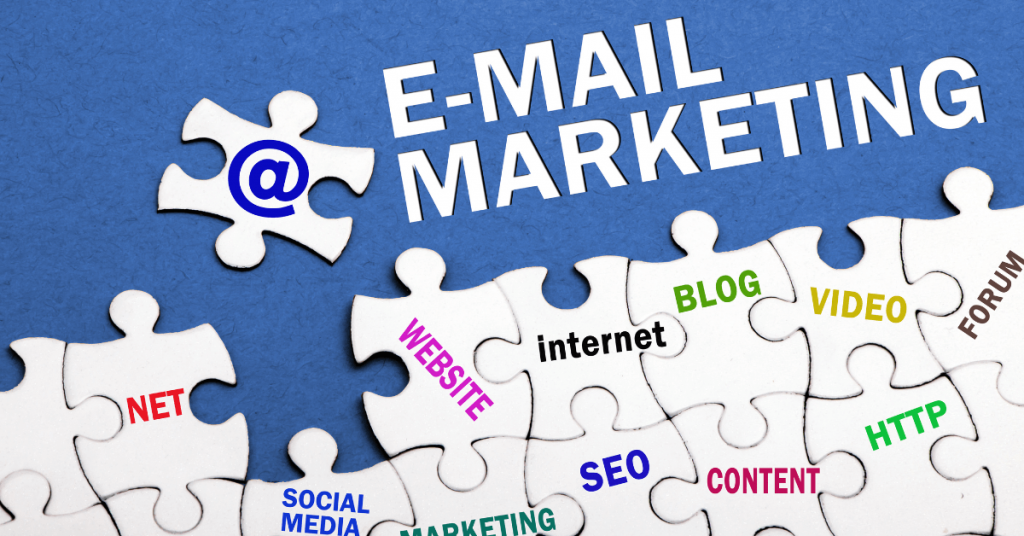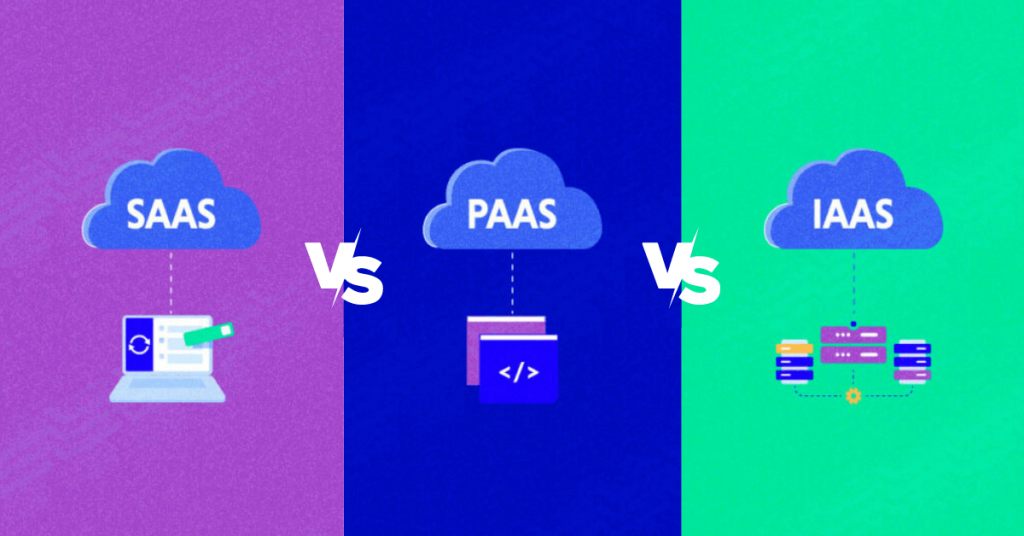In the rapidly evolving digital landscape, where technology advances at an unprecedented pace, Software as a Service (SaaS) has emerged as a transformative force for businesses. SaaS offers the convenience of accessing software applications through the cloud, eliminating the need for complex installations and updates. However, for SaaS companies to thrive, they must navigate a well-defined sales process. In this guide, we’ll walk you through every step of the SaaS sales process, from understanding the sales funnel to optimizing your strategies for maximum effectiveness.
What is the SaaS Sales Process?
The Software as a Service (SaaS) sales process refers to the series of steps that a company follows to identify, attract, qualify, and convert potential customers into paying subscribers for their SaaS products. This process typically involves several stages, each with its own set of activities and goals. Keep in mind that the specifics can vary based on the nature of the SaaS product, the target market, and the sales team’s approach.

What are the Stages of the SaaS Sales Process?
1. Understanding the SaaS Sales Funnel
Awareness Stage:
At the top of the funnel, the awareness stage, your goal is to generate interest in your SaaS offering. Employ a multi-faceted approach that includes content marketing, social media engagement, and targeted advertising. Create informative blog posts, engaging videos, and thought-provoking infographics that capture the attention of your target audience. By addressing pain points specific to their industry, you’re laying the foundation for brand recognition.
Interest Stage:
As prospects move into the interest stage, your focus shifts to providing value-driven content. Develop comprehensive guides, whitepapers, and webinars that delve into the challenges your target audience faces. By offering insights and solutions, you establish your brand as an authority and build trust. Engage with your audience through interactive quizzes or live Q&A sessions to foster a sense of community.
Consideration Stage:
Now, prospects are evaluating their options. Highlight the unique benefits of your SaaS solution by presenting real-life case studies and success stories. Showcase how your product addresses its pain points and leads to tangible results. Customized product demonstrations, tailored to the prospect’s industry or needs, can significantly influence their decision-making process.
Decision Stage:
It’s time to guide your prospects toward making a decision. Offer personalized product demos that showcase how your SaaS solution works in their context. Provide trials that allow them to experience the value firsthand. Arrange one-on-one consultations to address their specific concerns and questions, ensuring they have all the information needed to move forward.
Conversion Stage:
Seal the deal by finalizing terms and closing the contract. During this stage, your sales team should ensure a smooth transition from the sales process to the onboarding phase. Address any last-minute concerns and ensure that both parties are satisfied with the agreement. This is also the time to set expectations for what comes next, laying the groundwork for a positive customer experience.
2. Building an Effective SaaS Sales Team
Recruitment: Assembling a high-performing SaaS sales team starts with identifying individuals who possess a unique blend of technical knowledge, communication skills, and problem-solving capabilities. Look for candidates who demonstrate an understanding of the SaaS model and can articulate its advantages. During interviews, assess their ability to connect with prospects and convey the value of your solution.
Training: Empower your sales team with comprehensive training. They should have an in-depth understanding of your SaaS product, its features, and how it addresses customer pain points. Regular training sessions should cover updates and enhancements to keep the team well-informed. By staying ahead of industry trends, your team can offer relevant insights and recommendations to prospects.
Sales Collateral: Arm your sales team with impactful sales collateral that speaks to the unique value of your SaaS solution. Develop pitch decks that concisely convey your product’s value proposition. Provide case studies that showcase tangible outcomes achieved by previous clients. Competitor analyses allow your team to highlight how your solution stands out in the market.
Continuous Learning: Foster a culture of continuous learning within your sales team. Encourage attendance at industry webinars, conferences, and workshops. By staying attuned to the latest developments, your team can engage prospects with up-to-date insights and offer solutions tailored to current challenges.
3. Personalizing the Sales Approach
Buyer Personas: Building detailed buyer personas is crucial for personalizing your sales approach. Dive deep into the demographics, motivations, and pain points of your target customers. By understanding their challenges and aspirations, you can craft messages that resonate on a personal level, forging stronger connections.
Segmentation: Divide your audience into segments based on industry, company size, and specific needs. Tailor your messaging to each segment’s unique pain points and goals. This approach allows you to demonstrate a deep understanding of their business context and positions your solution as the ideal fit.
Tailored Pitches: Your sales pitches should be tailored to address the unique challenges faced by each prospect. Craft messages that emphasize how your SaaS solution can alleviate pain points, enhance efficiency, and drive growth. Sharing relevant case studies or success stories provides tangible evidence of your solution’s effectiveness.
4. Nurturing Leads and Prospects
Email Campaigns: Implement automated email campaigns to nurture leads over time. Start by delivering educational content that aligns with their pain points and interests. Gradually introduce more specific information about your SaaS solution, highlighting its features and benefits.
Drip Content: Drip content gradually to keep your brand top-of-mind for prospects. Regularly share insightful blog posts, informative videos, and relevant industry news. By consistently providing value, you establish your brand as a trusted resource and increase the likelihood of conversion.
Webinars and Workshops: Hosting webinars and workshops is an effective way to educate prospects about your SaaS solution. These interactive sessions allow you to showcase the functionality and benefits of your product in a live setting. By engaging with prospects directly, you can address their questions and demonstrate how your solution can solve their problems.
5. Conducting Effective Product Demos
Preparation: Before conducting a product demo, research the prospect’s company and industry thoroughly. Understand their pain points, goals, and existing workflows. This knowledge allows you to tailor the demo to their specific needs and demonstrate how your solution aligns with their objectives.
Focused Presentation: During the demo, focus on showcasing features that directly address the prospect’s challenges. Provide real-world examples of how your solution has helped businesses similar to theirs. Highlight specific use cases that resonate with their industry, emphasizing how your SaaS product can streamline their operations.
Interactive Approach: Make the demo interactive by allowing prospects to explore your SaaS solution firsthand. Let them interact with the user interface, test out features, and experience ease of use. This hands-on experience deepens their understanding and connection with your product.
Addressing Concerns: Anticipate objections and concerns that may arise during the demo. Prepare responses that directly address these issues, providing solutions and demonstrating your commitment to resolving any potential roadblocks.
6. Handling Objections and Closing Deals
Active Listening: When prospects voice objections, practice active listening. Allow them to express their concerns fully before responding. This approach demonstrates empathy and establishes a foundation of trust.
Addressing Objections: Craft responses that directly tackle objections. Share case studies, success stories, or data that demonstrate how your solution has overcome similar challenges. Offer tangible evidence that reassures prospects of your product’s effectiveness.
Negotiation: Negotiating terms, pricing, and contract details is a critical skill. Approach negotiations as a collaborative effort to find mutually beneficial solutions. Focus on building a long-term relationship rather than solely on transactional terms.
Trial Periods: Offering trial periods or extended demos can be a game-changer. Allowing prospects to experience your SaaS solution firsthand removes the uncertainty and builds their confidence in its value. This firsthand experience often transforms prospects into convinced customers.
7. Post-Sale Onboarding and Support
Smooth Transition: Ensure a seamless transition from the sales process to the onboarding phase. Effective communication between your sales and onboarding teams ensures that the customer experience remains cohesive.
Comprehensive Onboarding: Provide in-depth onboarding to new customers. Guide them through the setup process, ensuring they understand how to use your SaaS solution effectively. Address any initial challenges promptly to set the stage for a positive relationship.
Continuous Support: Offer ongoing customer support to address any issues or questions that arise after the sale. Proactive support demonstrates your commitment to customer success and strengthens the bond between your brand and your customers.
8. Measuring and Optimizing the Sales Process
Key SaaS Metrics: Identify key performance indicators (KPIs) that measure the effectiveness of your sales process. Conversion rate, churn rate, customer acquisition cost, and customer lifetime value are crucial SaaS metrics that provide insights into your strategy’s success.
Sales Analytics Tools: Leverage advanced analytics tools to track and analyze sales data. These tools offer detailed insights into prospect behavior, enabling you to refine your approach based on data-driven insights.
A/B Testing: Implement A/B testing to optimize various elements of your sales process. Test different email subject lines, landing page designs, and sales strategies to determine what resonates best with your audience. A/B testing helps you fine-tune your approach for maximum impact.
Feedback Loop: Establish a feedback loop between your sales, marketing, and product teams. Regular communication ensures that insights from customer interactions are shared across departments. This collaboration fosters continuous improvement in your SaaS sales process.
What are the 3 SaaS Sales Models?
The SaaS (Software as a Service) sales models typically refer to the different ways in which SaaS companies structure their pricing and subscription offerings. There are several SaaS sales models, but three common ones are:
1. Flat-Rate Subscription Model:
In this model, customers pay a fixed monthly or annual fee to access the SaaS product. This fee often includes access to all features and functionalities of the software. Flat-rate subscription models are popular because they provide predictable and straightforward pricing for customers. As a SaaS company, your revenue is based on the number of subscribers and the subscription fee. Examples include Dropbox, Microsoft 365, etc
2. Tiered Pricing Model:
With the tiered pricing model, the SaaS product is offered in different packages or tiers, each with a varying level of features, usage limits, and pricing. Customers can choose the tier that best aligns with their needs and budget. This approach allows you to cater to different segments of the market and offer more value to customers who are willing to pay more. As customers’ needs grow, they can upgrade to higher tiers. Examples include HubSpot and Mailchimp.
3. Usage-Based Pricing Model:
This model charges customers based on their actual usage of the SaaS product. Pricing is often determined by factors such as the number of users, the amount of data processed, or the volume of transactions. Customers pay based on the value they derive from the product, making it flexible and scalable. For SaaS companies, revenue is tied directly to usage. Examples include Amazon Web Services (AWS) and Twilio.
These three models represent different approaches to pricing and monetizing SaaS products. It’s also worth noting that some SaaS companies might use a combination of these models or customize their pricing based on specific customer needs. Ultimately, the choice of sales model depends on factors such as the target market, the value proposition of the SaaS product, the competitive landscape, and the company’s growth strategy.
How long is the SaaS Sales Cycle?
The length of the SaaS Sales Cycle can vary widely depending on several factors, including the complexity of the SaaS product, the target market, the sales approach, the competition, and the readiness of the potential customers. Generally, SaaS sales cycles tend to be shorter than traditional software sales cycles due to the nature of cloud-based delivery and the lower barriers to adoption. However, there’s no one-size-fits-all answer, and sales cycles can range from a few weeks to several months or even longer.

Here are some factors that can influence the length of the SaaS sales cycle:
- The complexity of the Solution: If your SaaS product is relatively simple and addresses a clear pain point, the sales cycle might be shorter. However, if your product is highly specialized and requires significant customization or integration, the sales cycle could be longer.
- Decision-Making Process: If the decision-making process within the prospect’s organization involves multiple stakeholders, approvals, and budget considerations, it can extend the sales cycle.
- Market Maturity: In mature markets, where customers are already familiar with SaaS solutions, the sales cycle might be shorter. In contrast, in newer or less educated markets, you may need to spend more time educating potential customers, which can lengthen the cycle.
- Lead Quality: The quality of leads in your pipeline matters. High-quality leads that align well with your target customer profile are more likely to convert faster.
- Sales Strategy: Your sales approach can influence the cycle. For example, using content marketing and inbound strategies can attract customers who are already educated about SaaS, potentially shortening the cycle.
- Competitive Landscape: The level of competition and the number of alternative solutions in the market can impact how quickly customers make a decision.
- Trial Periods: Offering a trial period or freemium version of your SaaS product can allow potential customers to evaluate its value firsthand, potentially shortening the cycle.
- Customer Readiness: Some customers might already be actively seeking a solution like yours, while others may need time to recognize the need for your product.
- Contract Length: The length of the subscription contract can also affect the sales cycle. Shorter contract terms might lead to quicker decisions, while longer commitments might require more deliberation.
- Sales Team Efficiency: A well-organized and efficient sales team can navigate the sales process more effectively, potentially reducing the overall cycle length.
Overall:
It’s important to analyze your specific market, customer behavior, and historical data to gain a better understanding of what your SaaS sales cycle might look like. Regularly assessing and optimizing your sales process can also help you identify opportunities to reduce cycle times and improve conversion rates.
Conclusion – SaaS Sales Process
In a world where SaaS solutions have become the cornerstone of modern businesses, mastering the SaaS sales process is non-negotiable. Each step, from building a high-performing sales team to personalizing your approach, conducting effective demos, handling objections, and providing exceptional post-sale support, contributes to the journey of converting prospects into loyal customers.
By following this comprehensive guide, you’re armed with the knowledge and strategies needed to navigate the complexities of the SaaS sales process, delight customers, and drive exponential growth for your SaaS enterprise.
Stay adaptable, remain customer-centric, and continuously refine your strategies to stay ahead in this dynamic and competitive landscape. Your success hinges on your commitment to innovation and the customer experience.

